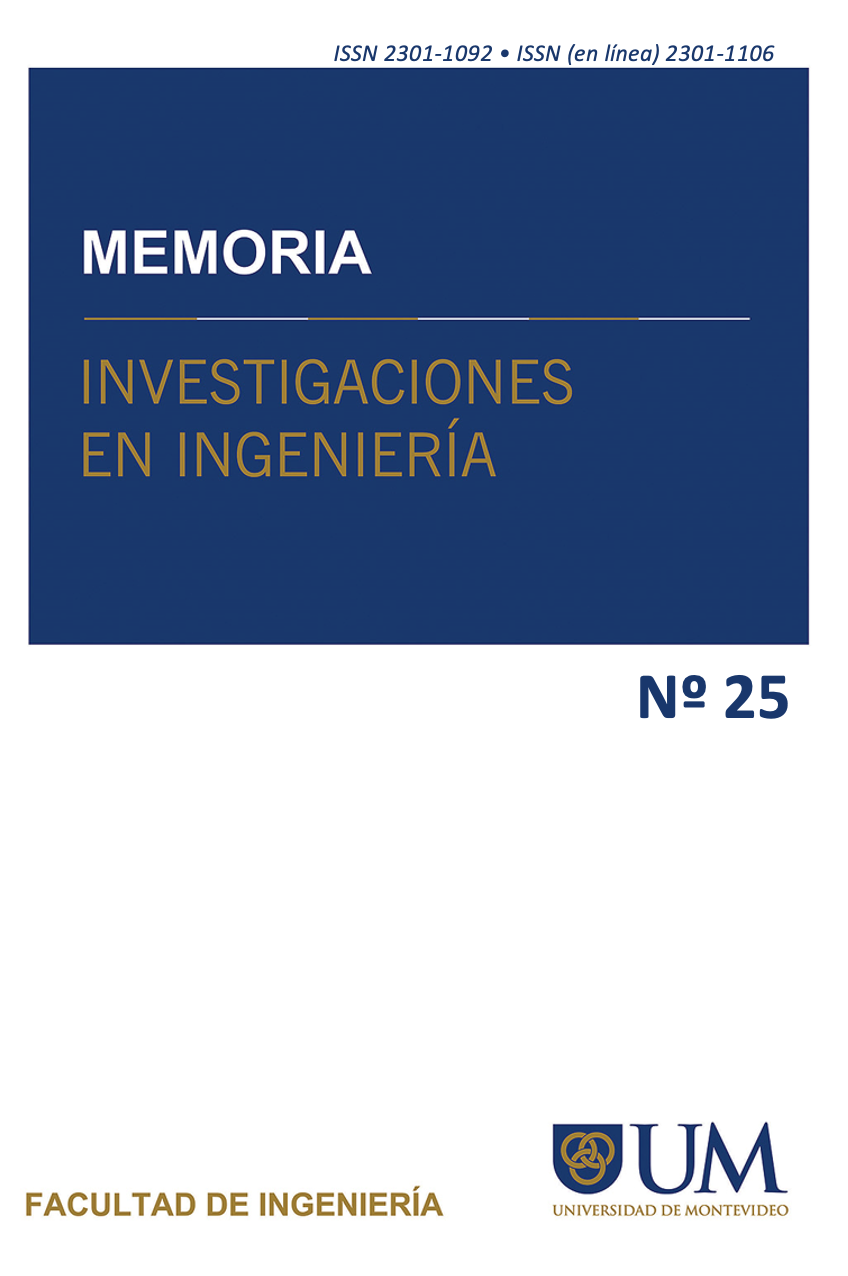Motor Stirling con energía solar para áreas domésticas y rurales en Karachi, Pakistán
DOI:
https://doi.org/10.36561/ING.25.15Palabras clave:
Energía solar, Motor Stirling, Análisis de Schmidt, Número de BealeResumen
Existe una necesidad crítica de usar la energía solar abundantemente disponible en todo el mundo debido a la crisis de energía global. El objetivo de este estudio es demostrar el uso residencial de un motor Stirling alimentado por energía solar en Karachi, Pakistán. El diseño se llevó a cabo para producir una potencia de salida de 5 kW para abordar los problemas con la generación de energía del hogar y el área rural. El diseño se simuló usando MATLAB. El uso de la energía solar como entrada de calor del motor fue uno de los componentes clave del diseño. Esto permitió construir el motor para ubicaciones con mucha radiación solar. En regiones con abundante energía solar, se pueden usar cocinas solares, calentadores de aire solar y otros electrodomésticos. Para la generación de energía, sin embargo, se eligió el motor Stirling. Los cálculos de la intensidad del sol mostraron que 5 kW de salida del motor Stirling podrían generarse a partir de 12 kW de electricidad solar. El concentrador para concentrar y reflejar las radiaciones entrantes al motor Stirling se seleccionó como un plato parabólico solar. Este proceso calentó el fluido de trabajo del motor, que luego se expandió y contrajo debido a las fuerzas termodinámicas para producir los golpes de energía del motor.
Descargas
Citas
P. Saini, S. Powar and D. V. Patil, "Review on Integration of Solar Air Heaters with Thermal Energy Storage," Applications of solar energy pp. 163-186, 2018.
Rehman, Naveed, Mohamad Hijazi, and Muhammad Uzair. "Solar potential assessment of public bus routes for solar buses." Renewable Energy 156,pp. 193-200. 2020
Uzair, M., Sohail, S. S., Shaikh, N. U., & Shan, A. “Agricultural residue as an alternate energy source: A case study of Punjab province, Pakistan”. Renewable Energy, 162, pp. 2066-2074, 2020
S. Akhtar, K. Hashmi, I. Ahmad and R. Raza, "Advances and significance of solar reflectors in solar energy technology in Pakistan," Energy & Environment, 2018.
K. Khan, A. Shah and J. Khan, "Electricity Consumption Patterns: Comparative Evidence from Pakistan’s Public and Private Sectors," Lahore Journal of Economics, vol. 21(1), 2016.
J. Kropiwnicki and A. Szewczyk, "Stirling Engines Powered by Renewable Energy Sources," Applied Mechanics and Materials, vol. 831, pp. 263-269, 2016.
Uzair, Muhammad, Syed Umair Hasan Kazmi, Muhammad Uzair Yousuf, and Asad Ali Zaidi. "Optimized performance of PV panels and site selection for a solar park in Pakistan." Transactions of the Canadian Society for Mechanical Engineering 46(2), pp.412-426, 2022
Uzair, Muhammad, Ghulam Qadir Chaudhary, Naveed ur Rehman, Muhammad Zeeshan Anwer, Syed Hamza Hassan, Hamza Siddiqui, and Muhammad Shahbaz Hussain. "Numerical Investigation to Determine the Optimized Solar Cavity Shape." GMSARN, Volume 16(1), pp:55-65, 2022
Uzair, Muhammad. "Wind induced heat losses from solar dish-receiver systems." Doctoral Dissertation, Auckland University of Technology, 2018.
Hijazi, H., Mokhiamar, O., & Elsamni, O. (2016). Mechanical design of a low cost parabolic solar dish concentrator. Alexandria Engineering Journal, 55(1), 1-11.
Uzair, Muhammad, Mubashir Ali Siddiqui, and Usman Allauddin. "Numerical study of flow patterns and performance of a coupled cavity–dish system under different focal lengths." Transactions of the Canadian Society for Mechanical Engineering 46(2), pp. 225-235, 2021.
Uzair, Muhammad, Timothy Anderson, and Roy Nates. "Impact of dish structure on the convective heat loss from a parabolic dish solar cavity receiver." In 2016 Asia-Pacific Solar Research Conference. Australian PV Institute, 2016.
Price, Hank, Eckhard Lu¨ pfert, David Kearney, Eduardo Zarza, Gilbert Cohen, Randy Gee, and Rod Mahoney. "Advances in parabolic trough solar power technology." J. Sol. Energy Eng. 124(2), pp. 109-125, 2002.
F. M. Mohamed, A. S. Jassim, Y. H. Mahmood and M. A. Ahmed, "Design and Study of Portable Solar Dish Concentrator," 2012.
A. Z. Hafez, K. El-Metwally, A. Soliman and I. Ismail, "Solar parabolic dish Stirling engine system design, simulation, and thermal analysis," Energy Conversion and Management, 2016.
Smith, Lee, Brian Nuel, S. Weaver, Stefan BERKOWER, Samuel C. WEAVER, and Bill GROSS. "25 kW low-temperature stirling engine for heat recovery, solar, and biomass applications" in ISEC, 2016.
Uzair, Muhammad, Asad A. Naqvi, Maaz Akhtar, Asad A. Zaidi, and Syed Umair Hasan Kazmi. "Statistical Approach to select the Best Suitable Solar Model for Global Radiation: Case Study of Karachi, Pakistan." Tecciencia 17,32,2022.
Stine WB and Diver RB, "A compendium of solar dish/Stirling technology," 1994.
Saenyot, Khanuengchat, Kitsakorn Locharoenrat, and Sarai Lekchaum "Design and Fabrication of Gamma-Type Stirling Engine on Parabolic Dish of Solar Concentrator by a Compression Ratio Method," Applied Mechanics and Materials (Volume 851) , pp. 383-388, August 2016.
Kongtragool, Bancha, and Somchai Wongwises. "A review of solar-powered Stirling engines and low temperature differential Stirling engines." Renewable and Sustainable energy reviews 7(2), pp. 131-154, 2003.
Hoffschmidt, Bernhard, Spiros Alexopoulos, Joachim Göttsche, Markus Sauerborn, and O. Kaufhold. "High concentration solar collectors." Comprehensive Renewable Energy, pp. 165-209, 2012.























